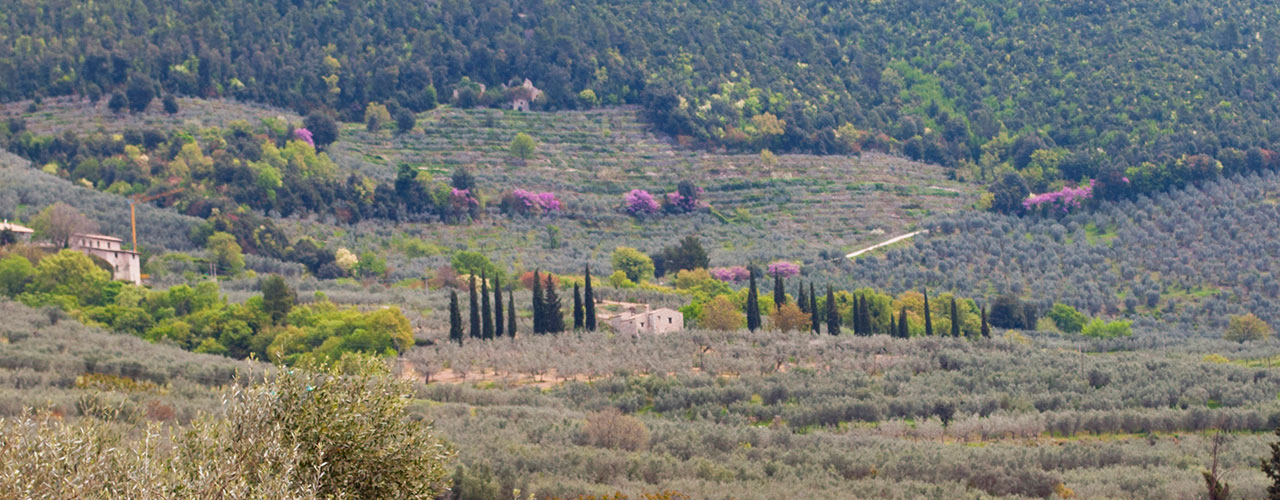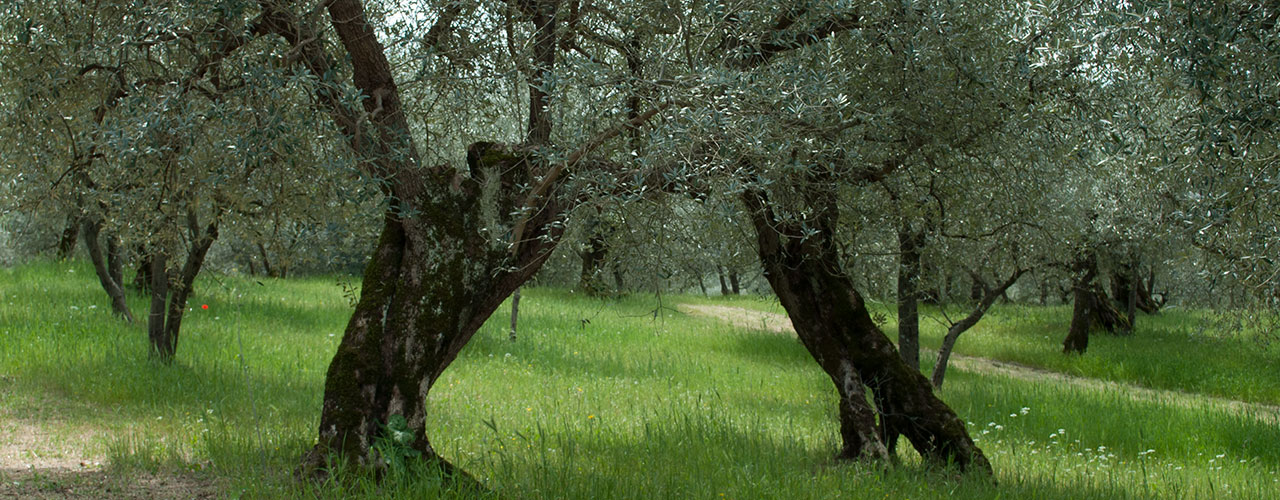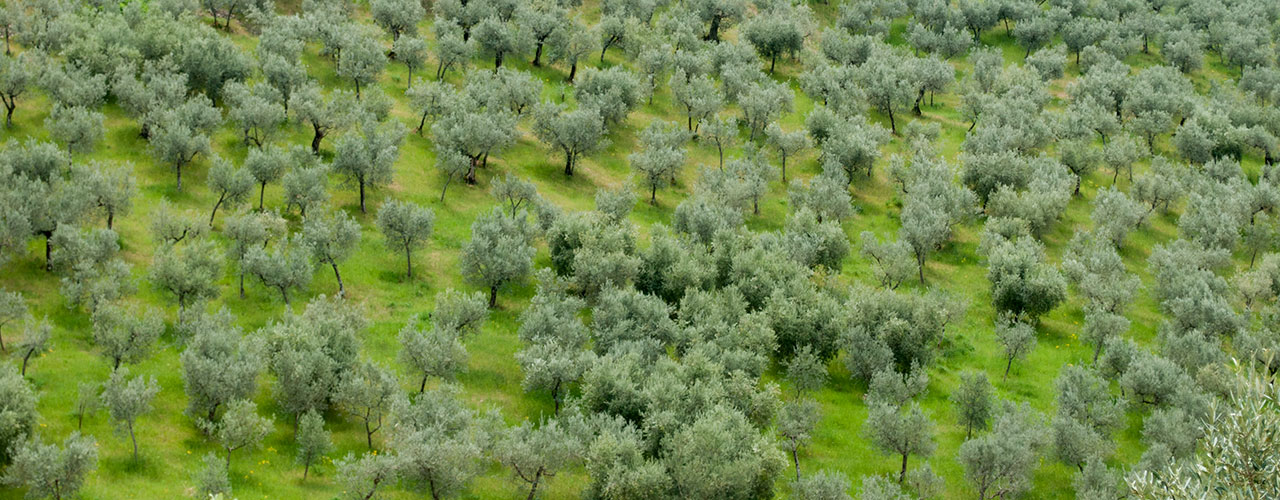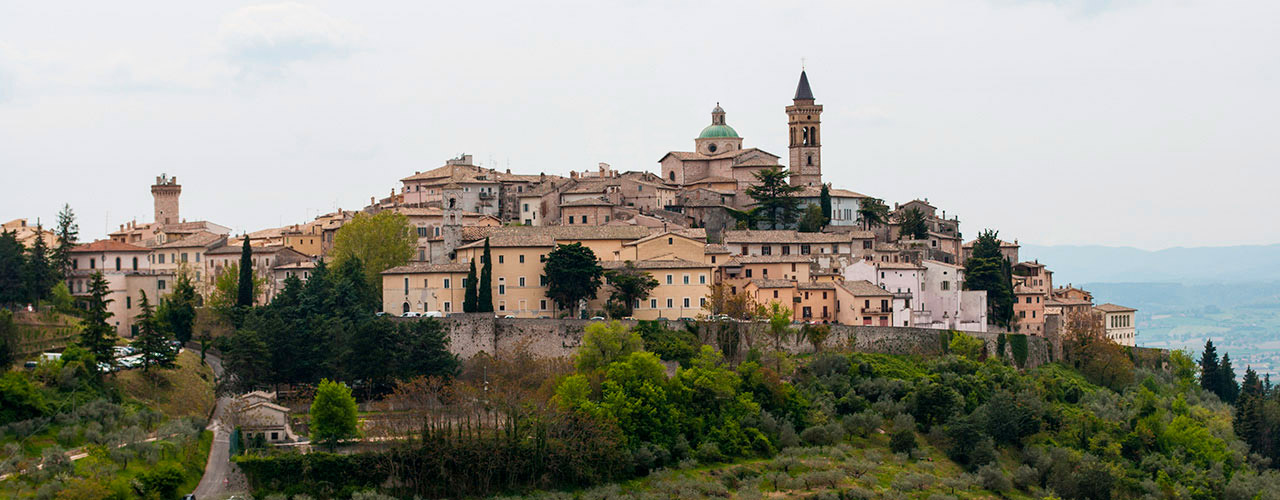

Agricola Mascio farm is located in Trevi, an ancient small town of the center Italy region called Umbria. Trevi is known, not only for its history, but also for the unspoiled beauty of its landscape.
The landscape surrounding Trevi outlines the harmony between nature and man, who with his work, has modeled the hills since the age of ancient Rome by creating terraces and planting thousands of olive trees.
Still today, as well as in the past, Trevi and its surroundings get by olive trees light tones, quietness and harmony.
In this land, immersed in a sea of greenness with silver reflexes, there is the farm Mascio which aims to enhance the fruit of its olive groves by means of high quality DOP olive oil production, with spirit of innovation in applying cultivation and agronomic best practices, in adopting agricultural cutting edge techniques for product extraction and storage, while respecting the environment and traditions.
The farm Mascio aims to pursue excellence in production of olive oil intrinsic quality, as well as in quality perceived by its customers, to whom, in total transparency, information will be guaranteed to make them aware of product characteristics, authenticity and origin.

Since ancient times, cultivation of olive tree has had a predominant role and, over the centuries, besides influencing the landscape it had an impact on human activities so contributing to form many trades and several professions related to the world of the olive tree and oil, and which still today constitute a unique cultural heritage.
That heritage, over time, is not lost but even enriched by the contribution of new technologies, along with traditional techniques, so leading to a product considered among the best and worthy of being protected.
Along the historical path, from the ancient Romans, through the monks who have kept alive the know-how in the Middle Ages, up to the valuable contributions of the University of Perugia Agrarian Department, as well as the behavioral references and methodologies developed by the Technology Park of Umbria Region, have been laid the foundations for one of the best practices of olive tree cultivation and olive oil production.

Our company exploits the observation and recording of the evolutional phenomena of the olive tree (phenology) which intervene throughout the year regulating the cyclic development of the olive's growth, from its vegetative stasis to the drupe's complete maturation.
Those observations beat the pace of the olive tree and of the cultivation practices; in that way we are able to get an economically satisfactory olive production, which is very challenging in this period of climate change.
A description of the phenological stages which the olive tree goes through during its growth (vegetative stasis, vegetative revival, emission of inflorescence buds, opening of flower clusters, full flowering, initial fruit development, lignification of the stone, fruit coloring and maturation) have been described by Rallo and others in 1994. Therein it is further specified that the development of the vegetative organs takes place yearly while the reproductive activity takes place in a two-year period.
Our company goal is to build a database with observation measures of the plants' development during the annual growth cycle and to correlate it to our cultivation procedures.
It is our belief that such a database will enable us to improve the implementation choices concerning the production techniques and crop protection with a special care primarily to the quality which represents our real business objective.

A drop of oil is a drop of history, of legend, of myth and religion. It is witness of the "Mare Nostrum" civilization progress, of the trade development, of the economic achievements, of the man evolution. According to the legend Adam received by an Angel three seeds of the Tree of Knowledge of Good and Evil. He died and his son Seth placed between his lips those three seeds. On his grave sprouted three shrubs: cedar, cypress and olive tree.
At the time of eternal myths on the rock of Athens there was a challenge: Athena and Poseidon were competing for the protection of the city that should dominate the Mediterranean see. By means of his trident Poseidon made even jump out the first horse from a prodigious spring of water! But it was not enough. The wise Athena, Virgin as impregnable was her city, brought back from Libia1 a graft of the tree sacred to her: she gave the Olive tree as a gift and won! Tenacious and chaste, along with the wild olive, it was considered unequalled by all the gods and all men! Homer was the first one who defined its attributes: "έρνος εριθηλές "2 (érnos erithelés) fruitful bud, "καλόν" (calon) "τηλεθάον" (telethàon) beautiful, luxuriant, "χλωρόν"3 (cloròn) green its trunk, "λευκόν" (leucòn) white its flower. It is then that the man draws a real treasure from it: "έλαίғον ύγρον"4 (elàivon ugron) clear oil, liquid dripping from the working canvasses in the palaces of Alkinoos; fat oil, dense "λιπόν"5 (lipo), which takes Patroclus towards immortality, it shines his horses' manes, it brightens the hair of Achilles and Menelaus! When Odysseus sees the tree "τανυφύλλος" (tanifillos) with wide foliage at the entrance of the bay of Ithaca, he knows he's home, at the beloved harbor, at the Naiads cave where vases filled with honey and oil are shelved6.
Olive oil not only lights travelers' routes but it also travels and travels ... It reaches Italy. And it was thanks to Aristeo7, the Apollo of the shepherds, punished for having tried to use violence to Eurydice, beloved by Orpheus, and to have caused her descent into the Kingdom of the Dead. Guilty and so forced to wander, but thanks to the accuracy with which he, in Sicily and Sardinia teaches the crop of olives, redeems himself and acquires the divinity. Olive oil heals and preserves. Chronos swallowed his children to avoid being toppled, but when it was the turn of Zeus, Rea gave him a stone to eat in lieu of, that trick allowed the salvation of the father of the gods. That thrown up stone is in Delphi, the Navel of the World, surrounded by ringlets of wool and always well greased with olive oil8. Olive oil rewards. Nobody in Greece would have accepted money or gold for having won a race, but only laurel and olive oil instead, that's for sure. Thus, at the Great Panathenaic Festival, the most important holy festivity narrated by Herodotus9, the inventor of History, and carved by Phidias and his pupils in the engravings of the Erechtheum, the temple around the first shrub on the Athens rock, "πάγος ελαιóφορος"10 (pàgos elaiòforos). Here weightless veiled women, carrying rounded amphorae αμφορεις (anforèis) on their shoulders, in procession towards the peak11. It is nice to imagine them in the IV century BC, in Athenian democracy age, while gratefully watching the east pediment of the Parthenon where Phidias, again, had immortalized the myth of the challenge won by Athena by means of the olive tree gave as a gift to the city. Thucydides writes: "The Mediterranean peoples emerged from savagery when they learned to cultivate the olive tree and the vine"12.
Olive oil enlightens, vital principle for the lamp from Orient to Occident, in the houses of the men as well as in the temples of the gods, from Egypt of the god Ra, Sun and State, to the Persian palaces, to the temple of King Solomon. It was just by means of olive oil that Kings of Israel used to receive their authority13, so anointed they became priests obtaining the divine blessing14, by means of olive oil they used to communicate Delight15 and Fraternity16. The prophets were the anointed17. Thus Christ is the literal translation from Aramaic into Greek of the word Masciah, Messiah, Anointed18. The plants of Gethsemane, 'oil-mill' literally, at the foot of the Mount of Olives silently listened to Jesus' prayer to the Father during his last night. Under the olive trees Benedictine and Cistercian monks still pray deserving of having resumed in the Middle Ages the cultivation of the plant, following faithfully the ancient texts, from Hesiod to Virgil, which they preserved and transcribed. The olive tree at the top of Mount Sinai - Horeb is alike sacred to both Jews and Muslims brothers, for whom it is a figure of Imam and one of the names of the Only God is written upon its leaves19. In "Dream of the Prophet", the tree is a symbol of the Paradise of Elected20. When the world undertook the path towards civilization after the Flood, the white dove bringing the olive branch, came to announce us quiet and peace. From then on, and like back then, the man used to dress his own life with a drop of olive oil, the "golden liquid".
1 PAUSANIA Description of Greece II - 47, 1
2 HOMER Iliad XVII - 53 sg.
3 HOMER Odyssey IX - 376
4 HOMER Iliad XVII - 56
5 HOMER Iliad XVIII - 349
6 HOMER Odyssey XIII - 102 sg.
7 Diodoro Siculo Loc Cit PAUSANIA Description of Greece X - 17, 3
8 PAUSANIA Description of Greece X - 24, 25
9 HERODOTUS Stories V - 56
10 THUCYDIDES Stories V - 47
11 EURYPIDES Ion - 1480
12 THUCYDIDES Stories I - 20
13 SAMUEL 16, 13; ISAIAS 11, 2
14 DEUTERONOMY 33, 24
15 Psalm 48, 5
16 Psalm 133
17 LEVITICUS 21, 10
18 LEVITICUS 21,
19 Koranic Verse of the Light 24, 35
20 HAYI 285, 294
Bibliographical References
R. Graves I Miti Greci Ed. Longanesi & C, 1963.
D. del Corno, L. del Corno Nella Terra del Mito Ed. Mondatori, 2001.
P. Citati La luce della notte Ed. Mondatori, 1996.
P. Adorno L'arte Italiana Ed. G. D'Anna, 1986.
J. Chevalier, A. Gheerbrant Dizionario dei Simboli Ed. Rizzoli, 1986.
S. Hayek Le Mystère d'Ismael Ed. Mame Paris, 1964.